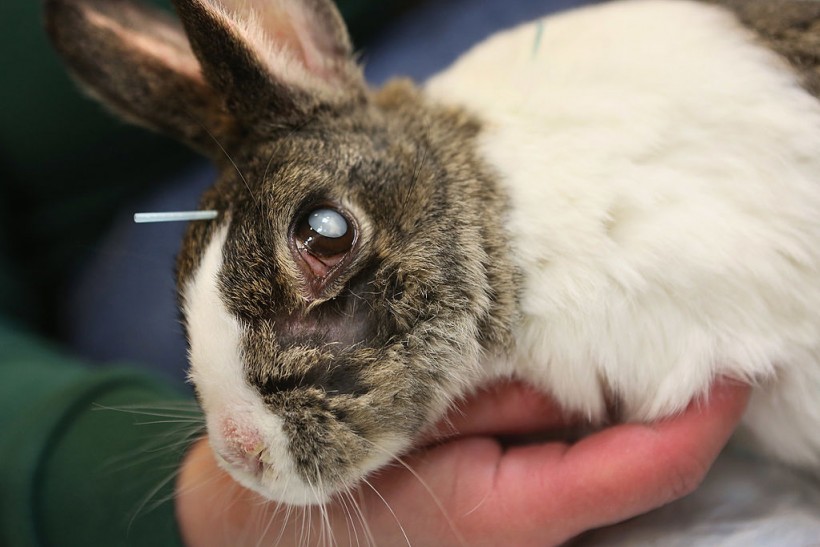(Photo : Photo by John Moore/Getty Images)
A deadly hemorrhagic disease had killed 80 per cent of rabbits in the U.S., and had spread across Florida. The strain of Rabbit Hemorrhagic Disease was known as RHDV2, a virus with fatality rate of between 80 and 100 per cent.
Although not contagious to humans, the disease outbreak highly infects both wild and domestic rabbits, and puts them over a three to nine-day incubation period. Symptoms include lethargy, weight loss and hemorrhages from various orifices such as the nose or eyes.
Infection can come from direct contact with live or dead infected rabbits, or by contaminated surfaces such as their bedding. It can also be spread orally and through skin trauma. Rabbits typically die within one to three days after infection.
RHDV-2 strain discovered in multiple states
The disease outbreak started off last year, and continued spread in the U.S. states, including New York and Florida.
According to Florida's Department of Agriculture and Consumer Services (FDACS), two cases of the disease have been confirmed-one in Lake County and another, more recent case, in St John's County. Meanwhile, the New York Department of Agriculture and Markets (NASDA) said on December 15 that a case of the virus had been confirmed in a domestic rabbit in Montgomery County, and an investigation is currently ongoing as to what was the source of the infection.
"This is the second occurrence of RHDV2 in New York," the NASDA statement said. "The first cluster of cases was in New York City in March 2020. The virus was quickly identified, isolated and eradicated."
Authorities suggest that pet owners reach out to their vets about the use of a vaccine that has been approved by the U.S. Department of Agriculture (USDA.)
Also read: Sri Lanka's Hungry Elephants Die After Eating Plastic Waste in Open Landfill
Vaccinating animals against RHDV-2
The use of vaccine against the disease had already been approved by FDACS. "FDACS is approving the use of the USDA experimentally approved Medgene vaccine which targets the U.S. strain of RHDV-2," it said in a statement released January 7. "In addition, importation approval of the European RHDV vaccines by licensed, accredited veterinarians began in July. Rabbit producers should contact their veterinarian regarding vaccinating their rabbits for RHDV-2."
FDACS had confirmed cases in 17 states. Along with Florida, these include Arizona, California, Colorado, Georgia, Idaho, Kentucky, Mississippi, Montana, Nevada, New Mexico, New York, Oregon, South Dakota, Texas, Utah, Wyoming.
Vets had already started vaccination in Florida, including Susan Kelleher of the Avian and Exotic Animal Hospital in Deerfield Beach, Florida, who had held a vaccine clinic for Floridians to get their rabbits inoculated against the disease. Here is a rabbit vet that is available for vaccinating your rabbits.
"They die suddenly from a high fever and bleeding from the nose and mouth," she told WPTV news. "We were able to get special permitting for the vaccine. The fact that it has gone all the way across the United States in two years demonstrates how contagious that is."
Advice published by the USDA in 2020 said the disease can spread rapidly and was highly resistant to extreme temperatures: "It can be spread through direct contact or exposure to an infected rabbit's excretions or blood. The virus can also survive and spread from carcasses, food, water, and any contaminated materials. People can spread the virus indirectly by carrying it on their clothing and shoes."
Also read: Worsening Air Pollution Severely Impairs Pollinators' Ability to Find Plants
© 2024 NatureWorldNews.com All rights reserved. Do not reproduce without permission.
* This is a contributed article and this content does not necessarily represent the views of natureworldnews.com






